Steelcase’s Rebecca Charbauski shares a three-phased approach to bringing people and energy back to work.
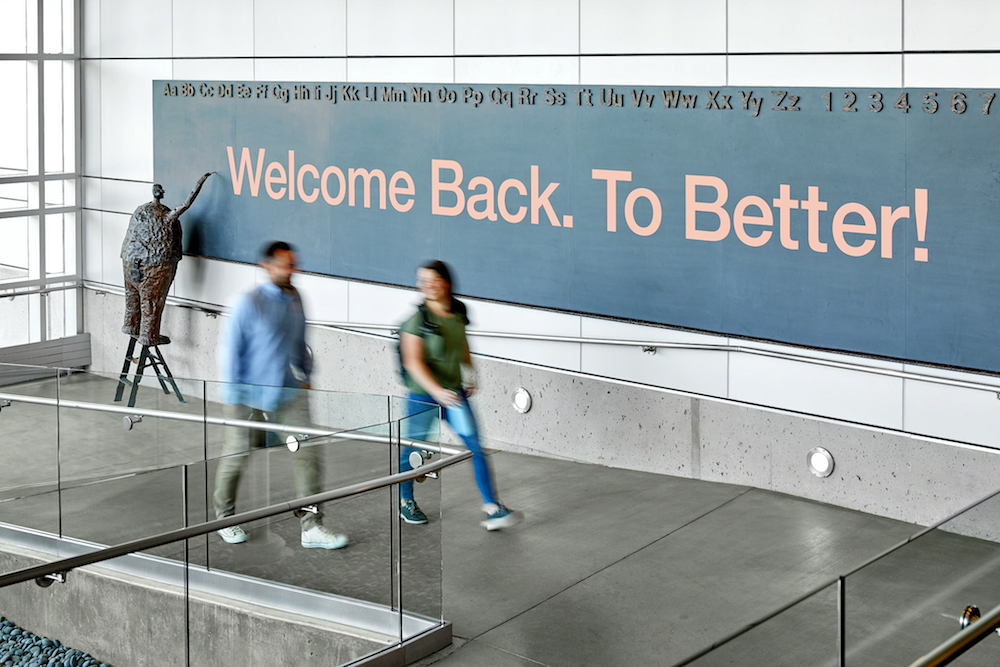
Many organizations are now thinking about how to bring their people back to the office. We have learned a lot over the past year with two runs at bringing people back to our Grand Rapids, Michigan campus. Last summer and fall when infection rates were low, we had a strong presence of employees on campus but quickly pivoted back to a work-from-home default in November when incidence rates spiked. That experience gave the company an opportunity to learn what worked well and what didn’t.
Over the spring and summer, we looked to those learnings to improve the approach and design a more thoughtful experience to help employees through the transition.
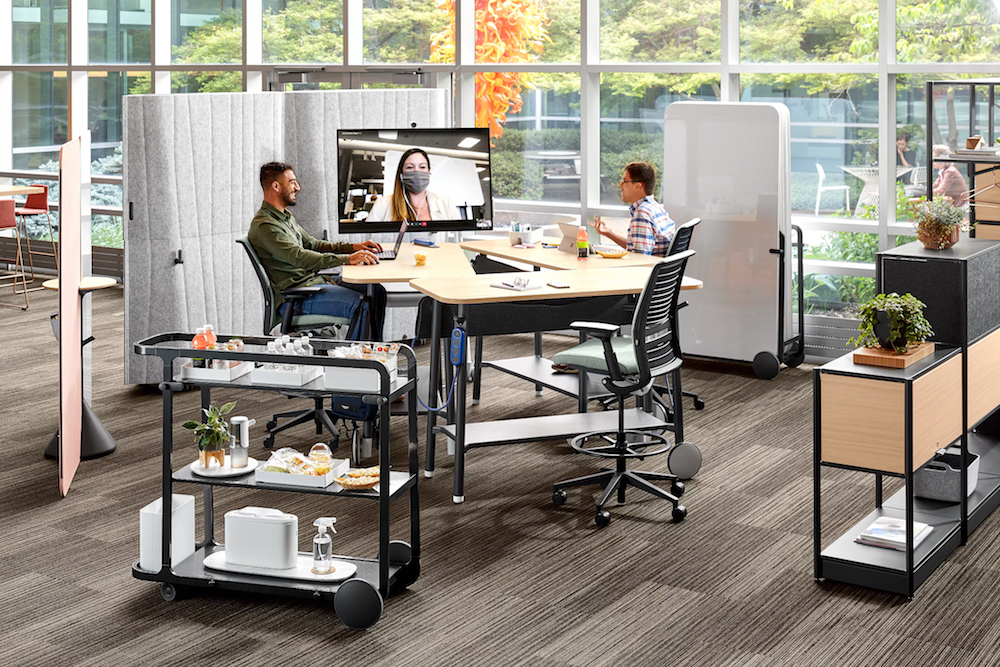
Communicate Again and Again
A recent McKinsey study cites strategic planning and employee communication as critical elements for transitioning into the next stage of returning to the office. While most organizations say they intend to embrace hybrid work, 68% have not clearly communicated a vision for post-pandemic work practices. The lack of specifics makes employees anxious and without a clear understanding of what to expect.
We learned this firsthand last fall. The organization wasn’t as clear as it could have been – on expectations for presence in the office, or on what employees could expect when they came back. Moving forward, leaders realized they needed to be more explicit and share more frequently. This spring, the organization doubled down to lay out a transparent plan for ramping up returns to the office. This included sharing its plans for how it intended to keep everyone safe, aligning the leadership team around an updated flexible work policy, and laying out expectations for balancing work in the office with work elsewhere.
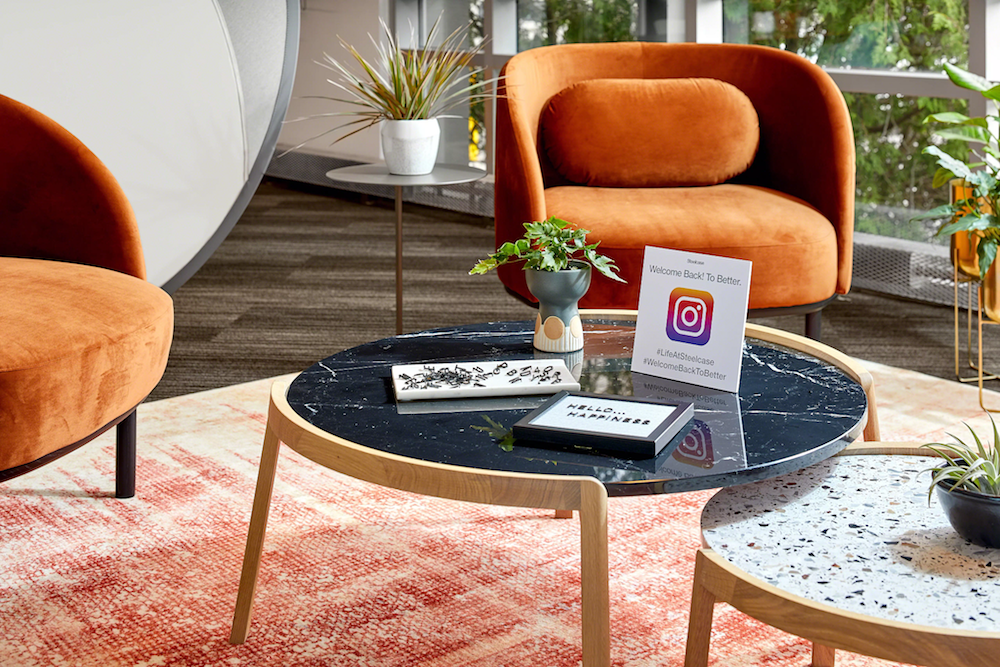
Choice + Control
We have been practicing flexible work (or mobile work) for more than a decade. The guiding principle gives people ‘individual choice and control’ over how, where and when they work based on what they need to do and who they need to do it with. The company updated its choice and control principle to provide the basis for its new post-pandemic hybrid work policy and shared it with employees.
We also recognized that prior to the pandemic, the choice and control principle wasn’t equally applied by teams and leaders across the company. To increase fairness and equity in implementation, it developed guided discussion tools for employees and leaders and equipped HR business partners to provide coaching.
Three-Phased Approach
One adjustment we made was to make the three-phased approach to bringing people back more explicit and transparent. The framework is informed by neuroscience and lays out a strategy for slowly ramping up returns, to help employees understand what they should expect when they return and reinforce hybrid work expectations.
Invite
The Invite Phase was used when infection rates were high, inviting any employee to work in the office if it is the best place for them but defining “work from home” as default for most employees. Teams who work with physical products, design or manage facilities, or employees who felt like they could be more productive in the office consistently came in.
Encourage
Designed as a transitional period, this phase encourages employees to come back to the office to reacquaint themselves with the spaces, reconnect with colleagues, and begin the change process. Over this time, people were encouraged to steadily ramp up the time they spend in the office.
Expect
In this phase, employees are expected to move to a new normal of hybrid work and consider the office as their primary workplace. Employees can define alternate work agreements with their manager. During this phase, new habits and routines are established and a sense of belonging and community is rebuilt.
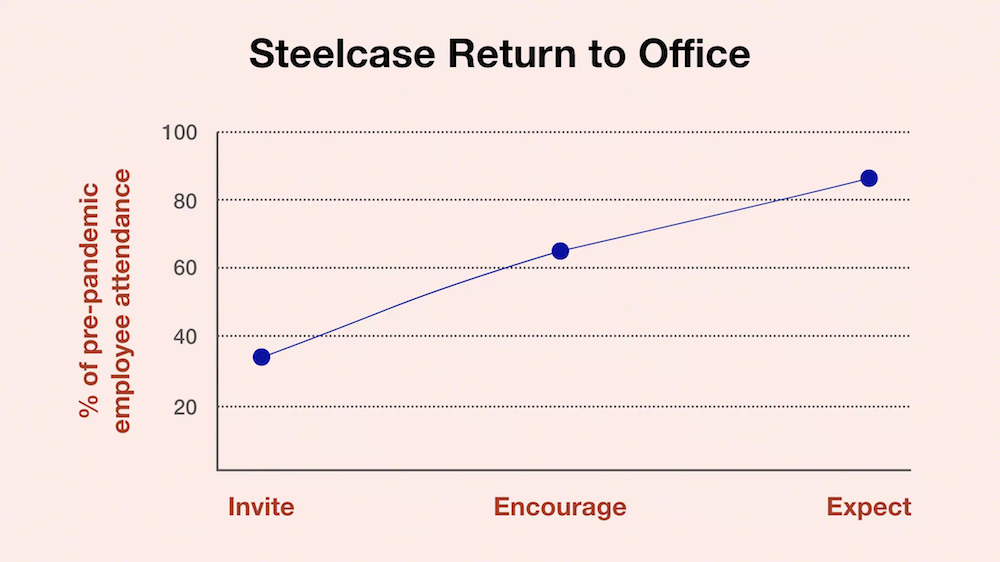
A Rare Opportunity
For every organization, this moment of transition is a rare opportunity for a reset. We identified culture shifts to design for and brought together a cross-functional team including Facilities, Design, IT, Human Resources and Communications to create new spaces and experiences across its main campus that would help drive change.
The three macro-principles to guide a return to work:
- Health + Safety First: Protecting the health + safety of people is always the top priority. The company follows CDC guidance and implements science-based protocols to create a safe work environment.
- Clarify + Communicate: Hybrid work is here to stay, and every organization will need to develop a point of view on what it looks like for them. We took the time to thoughtfully redefine and update post-pandemic employee expectations and have pursued a path of frequent communication for clarity.
- Entice with Experiences. We approached return to office planning as an employee experience design challenge. They wanted people to feel supported, understood, and listened to – and be excited to return and engage with their colleagues and the company. They also wanted them to be able to work more effectively alone and together and designed a variety of new spaces and experiences to inspire and excite them, as well as rebuild community.
Space as Catalyst
Spaces throughout our campus in Grand Rapids have been transformed, using recent research about what matters most to people and new design principles (Me + We, Fixed to Fluid, Open + Enclosed, Braiding the Digital + Physical). Among the changes is a new Social Hub in or Learning + Innovation Center (LINC) that’s been designed to support social and dining activities, as well as collaboration in the open plan. The high-energy space is the first thing people see when they enter the building, and it acts like a magnet to draw people in.

Key staff spaces have also been redesigned to provide people with lots of choice for privacy and focus work, technology enhancements to support hybrid collaboration, and places to work in relaxed environments that can cause more serendipitous interactions – encounters that can’t happen when people are remote. Spaces in the open are designed with flexible furniture elements that people can easily move to adapt the space on demand, as needed.
New Interactions
Our team designed a variety of new interactions across the campus. Employees are invited to experiment by working in prototype spaces with new technologies to support hybrid collaboration, and to provide feedback on the experience collected through QR codes.
We also learned that food and fitness services are important for drawing people back. To provide healthy food and beverage options, we worked with Compass, a food service provider, to give employees more choice and control over how and where they can get nourishment throughout the day.
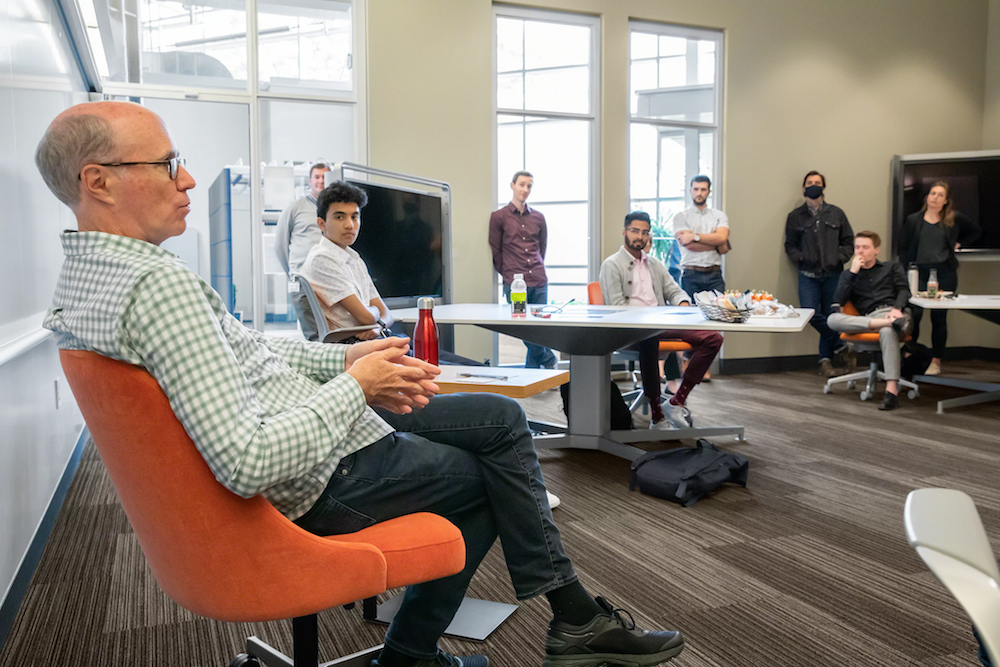
Focus on Community
People have missed the human connection throughout the pandemic and research shows they want to come back to the office to reconnect with colleagues and their organization. We designed events and experiences to help them build community. Weekly events are held outside – including a barbecue, performances by employee bands, and visits by local non-profits. A ‘Chat with Leaders’ series lets any employee on campus sit with a senior executive in a small group for coffee and snacks. These unstructured conversations let employees ask questions, and allow leaders to listen to the experiences of employees.
Being back together is re-energizing – the excitement and joy of the reunions has been profound. People are catching up with each other on life and work. Trust is being regenerated, serendipitous encounters are providing richer, lateral views of the company, interns and new employees are gaining an authentic understanding of the company, and people are working side-by-side in new hybrid ways. People are better together. This doesn’t mean people have to be together all the time, every day, 40 hours a week – but it does mean the office is the place where people come together to learn, listen, make stuff, regenerate trust, and creatively solve problems with less friction. The office is very much alive – and the future of the office is human.

